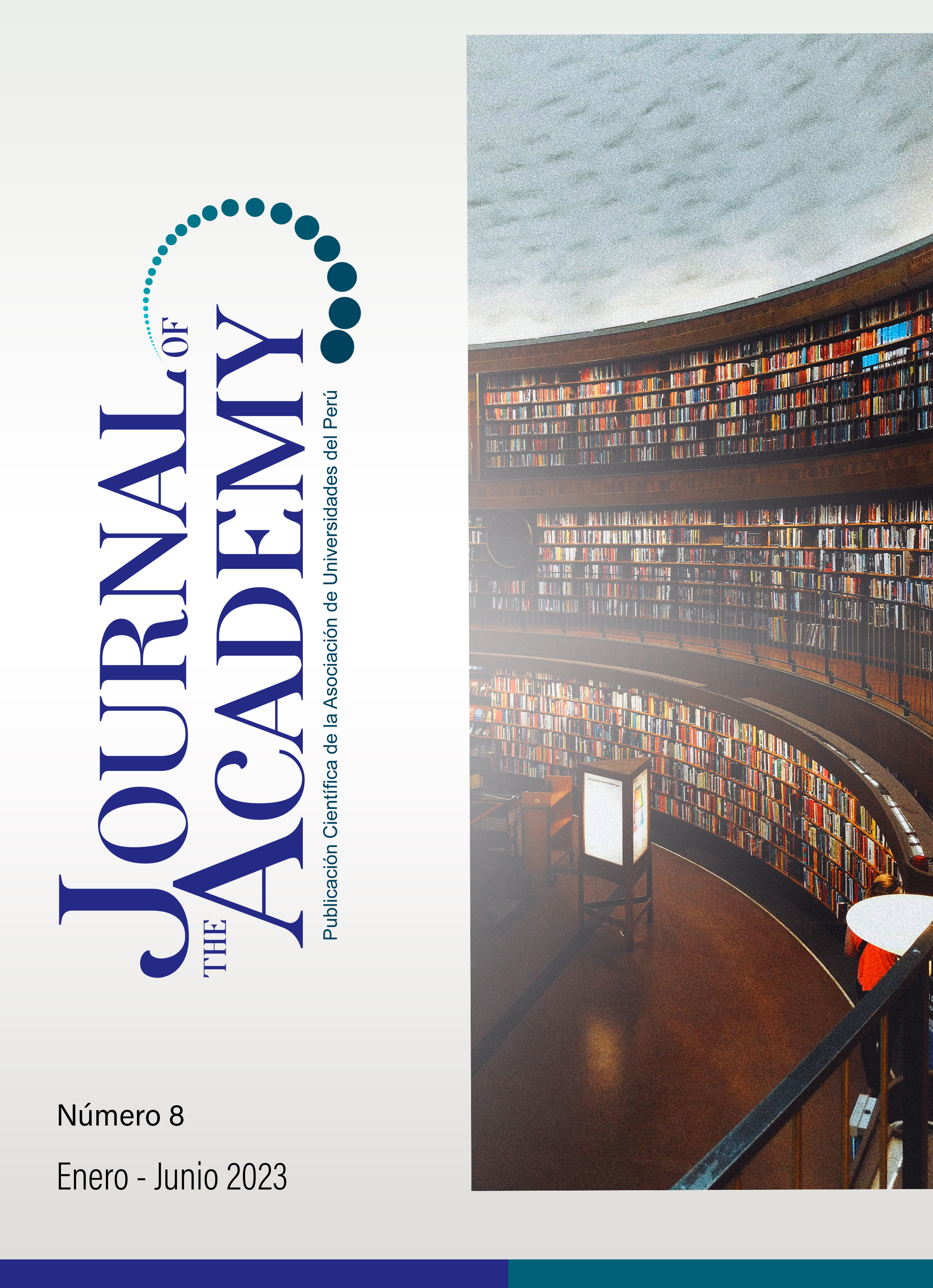Gap in Intercultural Communicative Competence within English classrooms in Chile
DOI:
https://doi.org/10.47058/joa8.7Keywords:
Interculturalidad, Competencia Comunicativa Intercultural, Modelo de Bryram, Enseñanza de la Lengua Inglesa, ChileAbstract
This article is a narrative review of the literature on intercultural competence in the English foreign language classroom in a Latin American context. The intercultural communicative competence model was designed in the 1990s in Britain by Michael Byram, a French teacher, to assist foreign language students with communicating with interlocutors from other cultures. The objective of this narrative review is to discuss the theoretical and conceptual frameworks of intercultural communicative competence model with the teaching of English as a Foreign Language in the classrooms of Latin America and specifically Chile. This narrative literature review strives to discuss in a broad way what the literature reveals is occurring and discover gaps in the research. The principal findings are that schools in Chile need to reduce ethnic and racial tensions and that the intercultural communicative competence model in the English as a foreign language classroom can form culturally sensitive students and teachers.
Downloads
References
Aman, R. (2017). Colonial differences in intercultural education: On interculturality in the Andes and the decolonization of intercultural dialogue. Comparative Education Review, 61(1), 103-120. https://doi.org/10.1086/690459
Bennett, M. J. (2004). Becoming interculturally competent. En Wurzel, J. (Ed.), Toward Multiculturalism: A Reader in Multicultural Education. Newton, Intercultural Resource Corporation.
Bustos González, R. A., Díaz Aguad, A. (2021). Gestión de la diversidad en escuelas chilenas de frontera. Perfiles Latinoamericanos, Flacso México 26(51) pp. 123-148 https://doi.org/10.18504/pl2651-005-2018
Byram, M. (2021) Teaching and assessing intercultural communicative competence. Channel View Publications. Kindle Edition.
Codina, L. (2020). Cómo hacer revisiones bibliográficas tradicionales o sistemáticas utilizando bases de datos académicas. Revista ORL, 11(2), 139. https://doi.org/10.14201/orl.22977
Green, B., Johnson, C., & Adams, A. (2006) Writing narrative literature reviews for peer-reviewed journals: Secrets of the trade. Journal of Chiropractic Medicine 5,(3) pp. 101–117. https://doi.org/10.1016/S0899-3467(07)60142-6
Guerra García, E., & Sandoval Forero, E. A. (2022). Neoindigenismo, interculturalidad y gobernanza en la Universidad Autónoma Indígena de México. Journal of the Academy, 7, 133–157. https://doi.org/10.47058/joa7.6
Haros-Pérez, J.M., Morales-Towns, V., García-Zúñiga, C., Mata-Sánchez, G., (2021) Diseño y validación de un instrumento para medir la integración intercultural en los negocios internacionales. Journal of the Academy, 6 pp.89–104. https://doi.org/10.47058/joa6.6
Iswandari, Y & Ardi, P. (2022). Intercultural communicative competence in EFL setting: A systematic review. Sola reflections 29(2). 361-380.
Jones Jr., R.G., (2017). Culture and Communication. En Communication in the Real World 2.0, Flatworld.
Martínez Rojas, D., Muñoz Henríquez, W., & Mondaca Rojas, C. (2021). Racism, interculturality, and public policies: An analysis of the literature on migration and the school system in Chile, Argentina, and Spain. SAGE Open. https://doi.org/10.1177/2158244020988526
McConachy, T., Golubeva, I., & Wagner, M., (Eds) (2022). Intercultural learning in language education and beyond: Evolving concepts, perspectives and practices (Kindle Edition). Channel View Publications.
Mendoza, A. (August 18, 2021). Content Language Integrated Learning (CLIL): Seriously, a good idea? annamend & the #Multi/plural turn. https://annamend.com/2021/08/18/content-language-integrated-learning-clil-seriously-a-good-idea/
Mondaca Rojas, C. (2021). Prácticas de inclusión de la diversidad cultural en la educación media técnica profesional en la frontera norte de Chile. FONDECYT 1220920 Agencia Nacional de Investigación y Desarrollo
Páez L., (2022). Exploring Intercultural Sensitivity in EFL Learners through Inclusion of YouTube Videos with Deep Cultural Content in Online Classes. [Masters Thesis, Universidad Pedagógica Nacional, Bogotá, Colombia]. Universidad Pedagógica Nacional. Biblioteca Central.
Risager, K. (2022) Intercultural communicative competence: Transnational and decolonial developments. In T. McConachy, I. Golubeva & M. Wagner (Eds.) Intercultural Learning in Language Education and Beyond: Evolving Concepts, Perspectives and Practices (pp. 45-76). (Kindle Edition). Channel View Publications.
Rodas-Pacheco, F. D., Rodas-Brosam, E. L. (2021). Lenguaje, aprendizaje de lenguas extranjeras, inglés e interculturalidad: una perspectiva ecuatoriana. INNOVA Research Journal, 6(3), 1-16. https://doi.org/10.33890/innova.v6.n3.2021.1726
Sanhueza Enríquez, S., Quintriqueo Millán, S., & Friz Carrillo, M. (2017). Triangulación de métodos como propuesta para el estudio de competencia comunicativa intercultural en contextos de inmigración e interculturalidad. Andamios, Revista de Investigación Social, 14(34), 283. https://doi.org/10.29092/uacm.v14i34.590
Singer, N., Rubio, M., & Rubio, R. (2018). Representaciones de estudiantes de traducción en el aprendizaje de una lengua extranjera. Onomázein 39, pp. 245–269. https://doi.org/10.7764/onomazein.39.10
Walsh, C. (2010). Interculturalidad crítica y educación intercultural. En J. Viaña, L. Tapia & C. Walsh (Eds.), Construyendo Interculturalidad Crítica (pp. 75-96). Instituto Internacional de Integración del Convenio Andrés Bello. https://aulaintercultural.org/2010/12/14/interculturalidad-critica-y-educacion-intercultural/
Zapata-Sepúlveda, P. (2017). The power of saying the normally “unsaid” as an act of empowering a woman’s voice in the academia and the fictional parallel side behind this power in a global era. Qualitative Inquiry, 23(5), 352-354.
Downloads
Published
Issue
Section
License
Copyright (c) 2023 Driscoll, Trevor, Tovar-Correal, Marjorie

This work is licensed under a Creative Commons Attribution-NonCommercial-ShareAlike 4.0 International License.



